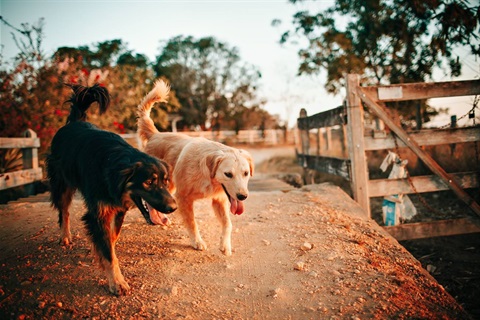Registering Your Pet

Registering and Microchipping Your Pet
Pets are great companions but it is essential that dog and cat owners register and microchip their pets. The Companion Animals Act 1998 was introduced in NSW on 1st July 1999 to protect pets, people and the wider community.
Microchipping and registration is a two-step process:
Step One
In NSW, all cats and dogs, other than exempt cats and dogs, must be microchipped by 12 weeks of age or before being sold or given away, whichever happens first.
1. Contact your local vet to have your animal microchipped.
2. You will complete a permanent identification form at time of microchipping.
3. Once the animal is microchipped, these identification details are entered into the NSW Companion Animal Register.
4. A certificate is then issued to the owner with the identification details.
5. Register your cat or dog as per step two.
Step Two
All cats and dogs, other than exempt cats and dogs, must be registered by six months of age. The registration fee is a once-only payment, which covers the cat or dog for its lifetime in NSW, regardless of any changes in ownership. You are encouraged to have your cat or dog desexed before registering it. To register your pet you will need:
1. The Lifetime Registration form - contact Council to obtain.
2. A certificate of microchipping or letter from your vet.
3. Proof of de-sexing from your vet or a statutory declaration (discounted fee for desexed animals).
4. Any documents which entitle you to a discount (for example pension card).
5. Payment can be made at Council either by cheque, money order, EFTPOS, VISA or cash.
You must notify Council if any of the following occur:
- Change of ownership, change of address, or any other details within 14 days;
- Death of animal within 28 days in writing;
- Missing animal within 96 hours;
- If a court declares/revokes a dog as being dangerous within 7 days; and
- If you sell or give away your animal a change of owner/details form must be completed and sent to Council.
Benefits of Registering your Pet
Registration clearly identifies the animal as yours. If your pet becomes lost, Council will be able to notify you of your pet's whereabouts and return it to its home.
Frequently Asked Questions
I'm not sure if my dog or cat is microchipped?
First have your animal scanned by your vet or our ranger. The appropriate enquiries will need to be made to verify any existing microchip, or if no microchip is found the next step is for you to arrange to get your animal microchipped.
What if I fail to microchip and register my dog or cat?
Penalties apply. There is a $165 fine if you fail to microchip your pet under the Companion Animals Act 8(3). There is a $275 fine if you fail to register your pet under the Companion Animals Act 9(1) or 10B(2).
Should microchipped animals still wear a collar/tag?
Yes. You should always ensure your dog or cat wears a collar and tag stating the animal’s name and your phone number. Penalties apply for failure to comply - $165 fine Companion Animals Act 12(2)
When must dogs or cats be registered?
Your dog or cat must be lifetime registered on or before six months of age. You a committing an offence every day the dog or cat remains unregistered.
Why is there a registration fee?
Registration fees are used by council to provide animal management related services to the community, such as:
- Straying dogs being collected and re-united with their owner
- Dog attack assistance and investigations
- Resolving neighbourhood disputes in regards to animal matters
- Attending to roaming/trespassing livestock matters
- Public education about responsible pet ownership
- Maintenance of leash free areas
- Compliance education and enforcement with local laws for the local communit
Please visit our Fees and Charges page to see current registration fees.
What do I do if I sell or give away my pet?
It is the responsibility of the person selling or giving away the animal to notify Council of the change. A form will need to be signed by the previous owner as well as the new owner and lodged with Council. Failure to notify Council of the change could result in fines.